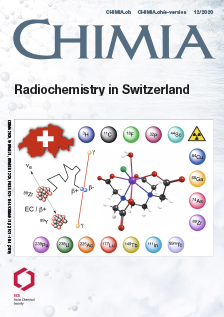Bioorganometallic Technetium and Rhenium Chemistry: Fundamentals for Applications
DOI:
https://doi.org/10.2533/chimia.2020.953PMID:
33357288Keywords:
Bioorganometallics, Molecular imaging, Radiopharmacy, Rhenium, TechnetiumAbstract
Due to its long half-life of 2.111×105 y, technetium, i.e. 99Tc, offers the excellent opportunity of combining fundamental and ' classical ' organometallic or coordination chemistry with all methodologies of radiochemistry. Technetium chemistry is inspired by the applications of its short-lived metastable isomer 99mTc in molecular imaging and radiopharmacy. We present in this article examples about these contexts and the impact of purely basic oriented research on practical applications. This review shows how the chemistry of this element in the middle of the periodic system inspires the chemistry of neighboring elements such as rhenium. Reasons are given for the frequent observation that the chemistries of 99Tc and 99mTc are often not identical, i.e. compounds accessible for 99mTc, under certain conditions, are not accessible for 99Tc. The article emphasizes the importance of macroscopic technetium chemistry not only for research but also for advanced education in the general fields of radiochemistry.Downloads
Published
2020-12-23
Issue
Section
Scientific Articles
License
Copyright (c) 2020 Roger Alberto, Henrik Braband, Qaisar Nadeem

This work is licensed under a Creative Commons Attribution-NonCommercial 4.0 International License.
How to Cite
[1]
Chimia 2020, 74, 953, DOI: 10.2533/chimia.2020.953.







